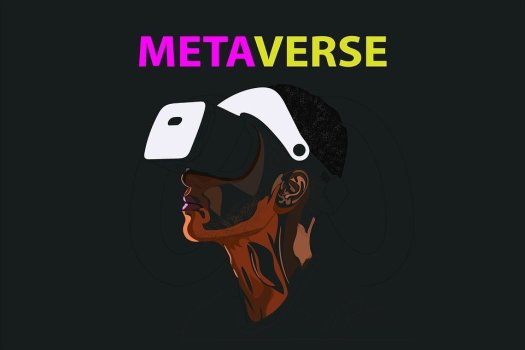K
Kathleen Martin
Guest
RALEIGH – We stand at a time when emerging technologies are enabling us to create a digital twin of the world that we live in, one with more accuracy than ever before, maintained up-to-date in real time, and with the ability to experience and interact with that digital simulation in immersive 3D.
Throughout human history, we have aspired to create and document versions of the world we live in. From the earliest cave paintings, we rendered copies of our activities and the things around us. As new technologies evolved, we documented our world with painting and sculpture and writing. In more recent history, we captured our world with photographs and sound recordings and later with video. And even more recently we create simulations with software.
This ability to document what was happening in the world, as well as to imagine the possibilities of what can happen, spawned massive industries. Industry today starts by simulating what could be – then making it real. Engineering and architecture use 3D software renderings in the creation of new products. Manufacturing and construction rely heavily on drawings and diagrams as a foundation for new infrastructure. Medical professionals capture imagery with x-ray and MRI to prescribe positive healthcare outcomes. Banks and financial services simulate markets with software algorithms in the design of new products.
Every industry will be fundamentally different, as we move from the Information Economy into the Data Economy. Manufacturers have long wanted to build an exact engineering model of their assembly lines, to optimize performance, and then to monitor every single variable to detect anomalies and prevent failures. Distributors want the same for their supply chains. Cities aspire to monitor, control and optimize traffic flow. Farmers want to maximize yield from every plant in the field and everyone wants accurate weather prediction.
THE INTERNET OF THINGS (IOT) HAS BEEN THE PREAMBLE FOR THE DATA ECONOMY.
For the past decade, IoT sensors have been deployed in increasing quantities in our homes, cities and fields as we make everything “Smart”. This proliferation of sensors lays a foundation for high resolution data capture that can be used to render an accurate digital simulation of the world we live in. The high bandwidth and low latency of 5G connectivity assures that we can keep that digital copy up to date in real-time. The power of cloud computing, and new edge cloud technology provides the processing power to visualize this digital version in the most realistic ways yet possible, through the use of augmented and virtual reality and holographics.
The Information Economy was powered by the Internet, and our user interface was a keyboard and a 2D screen. The Data Economy will be powered by the Metaverse. The Metaverse provides much more human-like interaction with voice and gesture interfaces and immersive 3D visuals. The internet provided access to stored information. The Metaverse will be continually powered with real-time data.
Continue reading: https://wraltechwire.com/2022/09/01/metaverse-is-coming-think-of-it-as-our-real-worlds-digital-twin-with-amazing-tech/
Throughout human history, we have aspired to create and document versions of the world we live in. From the earliest cave paintings, we rendered copies of our activities and the things around us. As new technologies evolved, we documented our world with painting and sculpture and writing. In more recent history, we captured our world with photographs and sound recordings and later with video. And even more recently we create simulations with software.
This ability to document what was happening in the world, as well as to imagine the possibilities of what can happen, spawned massive industries. Industry today starts by simulating what could be – then making it real. Engineering and architecture use 3D software renderings in the creation of new products. Manufacturing and construction rely heavily on drawings and diagrams as a foundation for new infrastructure. Medical professionals capture imagery with x-ray and MRI to prescribe positive healthcare outcomes. Banks and financial services simulate markets with software algorithms in the design of new products.
Every industry will be fundamentally different, as we move from the Information Economy into the Data Economy. Manufacturers have long wanted to build an exact engineering model of their assembly lines, to optimize performance, and then to monitor every single variable to detect anomalies and prevent failures. Distributors want the same for their supply chains. Cities aspire to monitor, control and optimize traffic flow. Farmers want to maximize yield from every plant in the field and everyone wants accurate weather prediction.
THE INTERNET OF THINGS (IOT) HAS BEEN THE PREAMBLE FOR THE DATA ECONOMY.
For the past decade, IoT sensors have been deployed in increasing quantities in our homes, cities and fields as we make everything “Smart”. This proliferation of sensors lays a foundation for high resolution data capture that can be used to render an accurate digital simulation of the world we live in. The high bandwidth and low latency of 5G connectivity assures that we can keep that digital copy up to date in real-time. The power of cloud computing, and new edge cloud technology provides the processing power to visualize this digital version in the most realistic ways yet possible, through the use of augmented and virtual reality and holographics.
The Information Economy was powered by the Internet, and our user interface was a keyboard and a 2D screen. The Data Economy will be powered by the Metaverse. The Metaverse provides much more human-like interaction with voice and gesture interfaces and immersive 3D visuals. The internet provided access to stored information. The Metaverse will be continually powered with real-time data.
Continue reading: https://wraltechwire.com/2022/09/01/metaverse-is-coming-think-of-it-as-our-real-worlds-digital-twin-with-amazing-tech/

